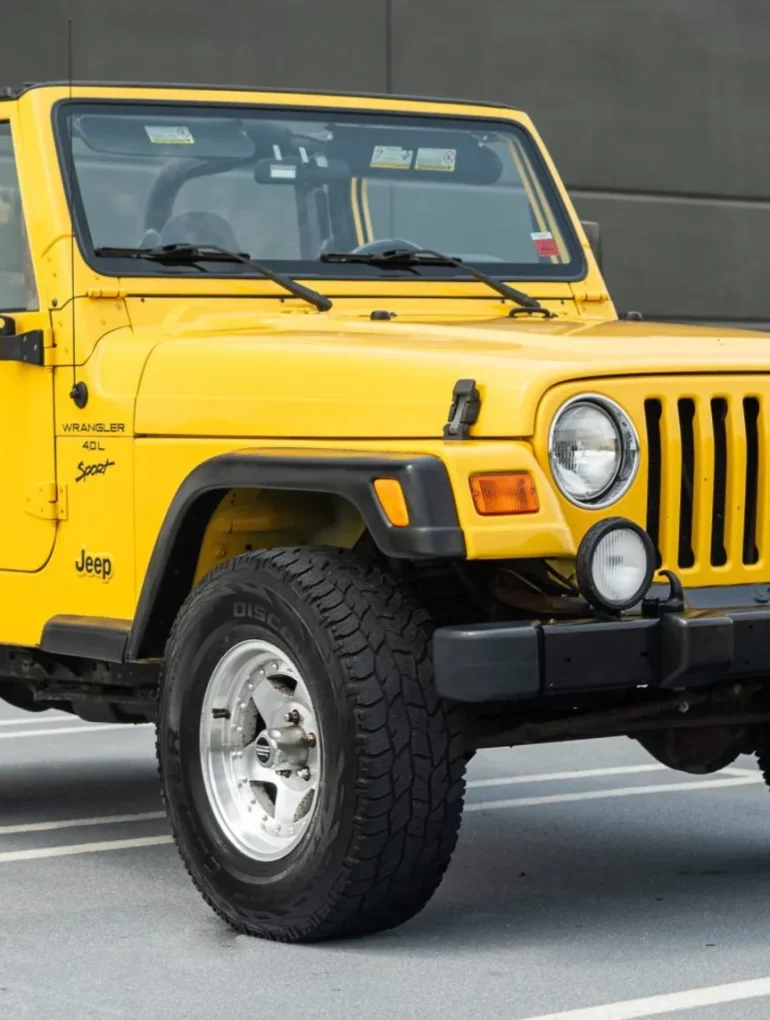The 2001 Jeep Wrangler: An In-Depth Exploration
The 2001 Jeep Wrangler represents a continuation of the TJ generation, which has been praised for its blend of classic Jeep styling, improved comfort, and unparalleled off-road capabilities. As part of a lineage dating back to the military Jeeps of World War II, the 2001 model year further solidifies the Wrangler’s reputation as a rugged and reliable off-road vehicle. This article delves into the history, specifications, engine options, features, and overall impact of the 2001 Jeep Wrangler.
Historical Context
The Jeep Wrangler’s lineage is deeply rooted in American automotive history, tracing back to the original Willys MB of World War II. The TJ generation, introduced in 1997, marked a significant redesign from the YJ series, with features such as round headlights and a more advanced suspension system. By 2001, the TJ Wrangler had established itself as a favorite among off-road enthusiasts and everyday drivers alike, building on its predecessors’ successes with incremental improvements.
Design and Styling
The 2001 Jeep Wrangler maintained the distinctive design elements that define the Jeep brand:
- Round Headlights: A return to the classic look that sets the TJ apart from the YJ’s square headlights.
- Seven-Slot Grille: An iconic Jeep feature that is instantly recognizable.
- Exposed Hinges: Adding to the rugged, utilitarian appearance.
- Removable Doors and Fold-Down Windshield: Providing versatility and an open-air driving experience.
Engine and Performance
The 2001 Jeep Wrangler continued to offer two reliable engine choices:
- 2.5-liter Inline-4: Producing 120 horsepower and 140 lb-ft of torque. This engine was paired with a five-speed manual transmission, offering a balance of fuel efficiency and adequate power for light off-road use and daily driving.
- 4.0-liter Inline-6: Delivering 181 horsepower and 222 lb-ft of torque. Available with either a three-speed automatic or a five-speed manual transmission, this engine provided robust performance, making it a favorite for more demanding off-road adventures and higher-speed on-road driving.
Suspension and Off-Road Capability
A key feature of the TJ generation, including the 2001 model, was the advanced suspension system:
- Quadra-Coil Suspension: Utilizing coil springs instead of leaf springs, this system significantly improved ride comfort and off-road capability.
- Solid Axles: Front and rear, ensuring durability and strength for challenging terrains.
This setup allowed the 2001 Wrangler to excel in off-road environments, offering superior handling, stability, and articulation compared to its predecessors.
Interior and Features
The interior of the 2001 Wrangler was designed with practicality and durability in mind:
- Functional Layout: Simple, intuitive controls for ease of use.
- Durable Materials: Resistant to wear and easy to clean, suitable for outdoor adventures.
- Optional Air Conditioning: Enhancing comfort in hot climates.
- Basic Audio System: Including an AM/FM stereo, with options for a cassette player or CD player in higher trims.
Trim Levels
The 2001 Jeep Wrangler was available in multiple trim levels, catering to various preferences and needs:
- SE: The base model, equipped with the 2.5-liter engine and essential features.
- Sport: Featuring the more powerful 4.0-liter engine, with additional comfort and convenience features.
- Sahara: The top-tier model, offering body-colored fender flares, upgraded interior materials, and enhanced features for a more refined driving experience.
Safety
Safety features in the 2001 Wrangler included:
- Driver and Passenger Airbags: Providing essential frontal impact protection.
- Anti-lock Brakes (ABS): Optional, enhancing braking performance in various conditions.
- Roll Bars: Integrated for rollover protection, crucial for a vehicle designed for off-road use.
Legacy and Impact
The 2001 Jeep Wrangler continued to build on the strengths of the TJ generation, reinforcing its reputation as a capable and reliable off-road vehicle. Its blend of classic Jeep design, dependable performance, and practical features made it a popular choice among Jeep enthusiasts and casual drivers alike. The durability of the 4.0-liter engine, in particular, has contributed to the model’s enduring popularity in the used car market.
Notable Changes for 2001
While the 2001 model did not introduce major changes, it saw some refinements:
- Improved Interiors: Slight updates to the materials and ergonomics.
- Expanded Options: More choices for audio systems and comfort features.
- New Colors: Additional paint options to appeal to a broader range of buyers.
Conclusion
The 2001 Jeep Wrangler upheld the tradition of ruggedness and versatility that has long been associated with the Jeep brand. Its consistent performance, iconic design, and practical features solidified its place in the Jeep lineup. The 2001 Wrangler remains a sought-after model for those seeking a dependable and capable off-road vehicle with a timeless design. Whether tackling challenging trails or navigating urban environments, the 2001 Jeep Wrangler continues to be a symbol of adventure and durability.

